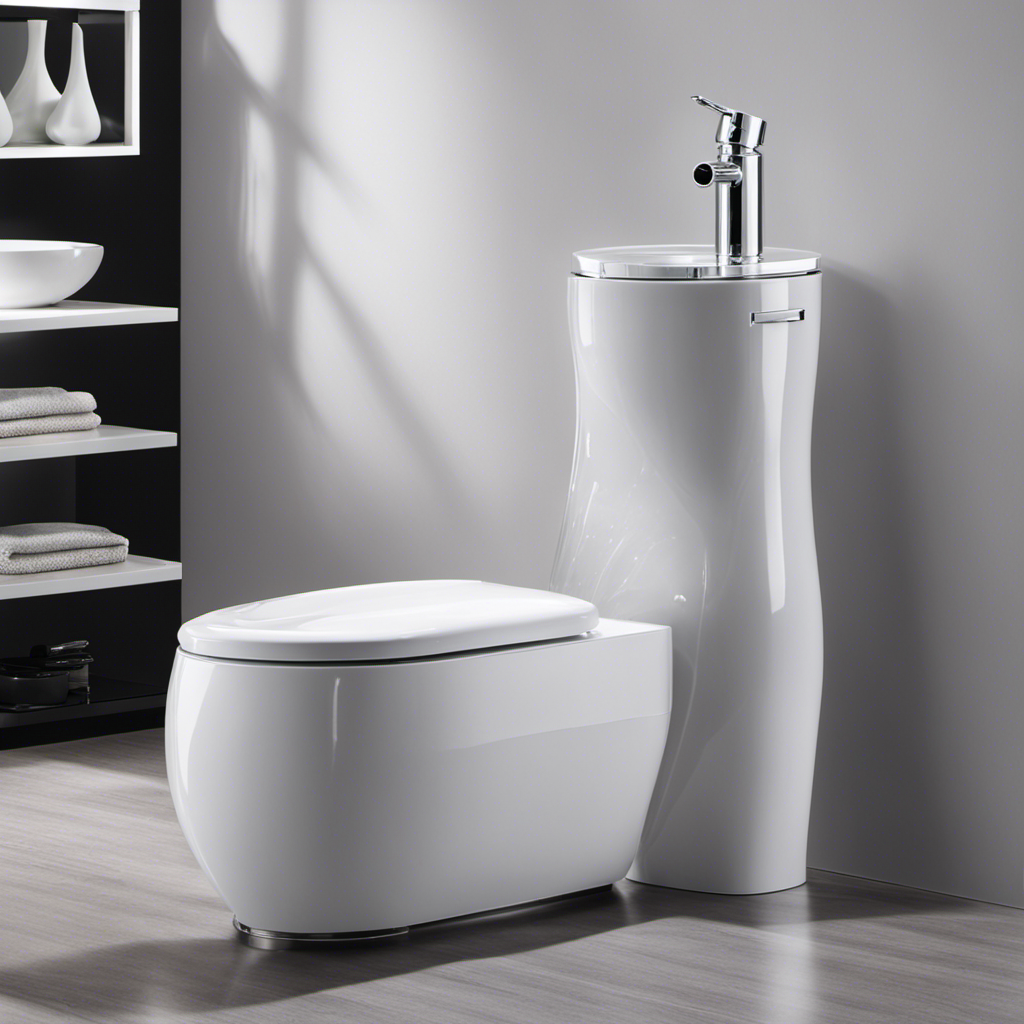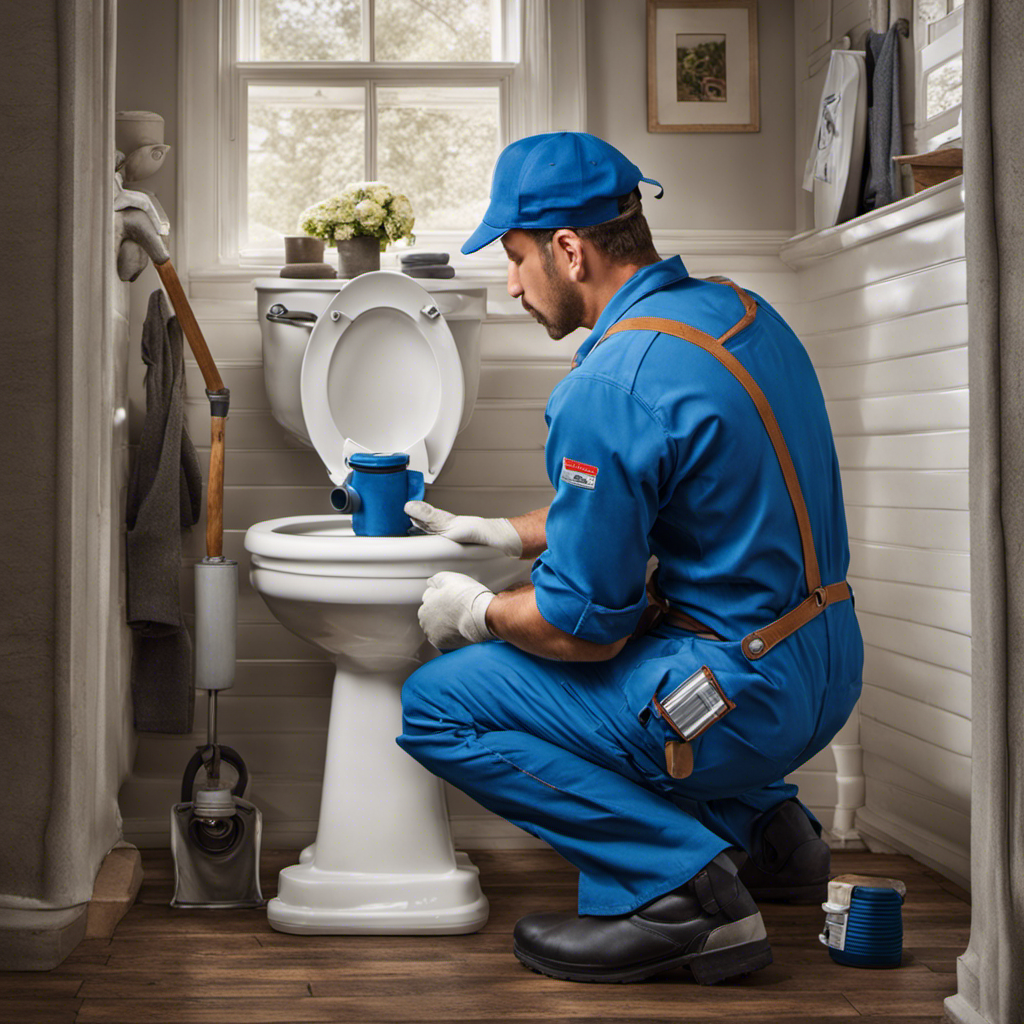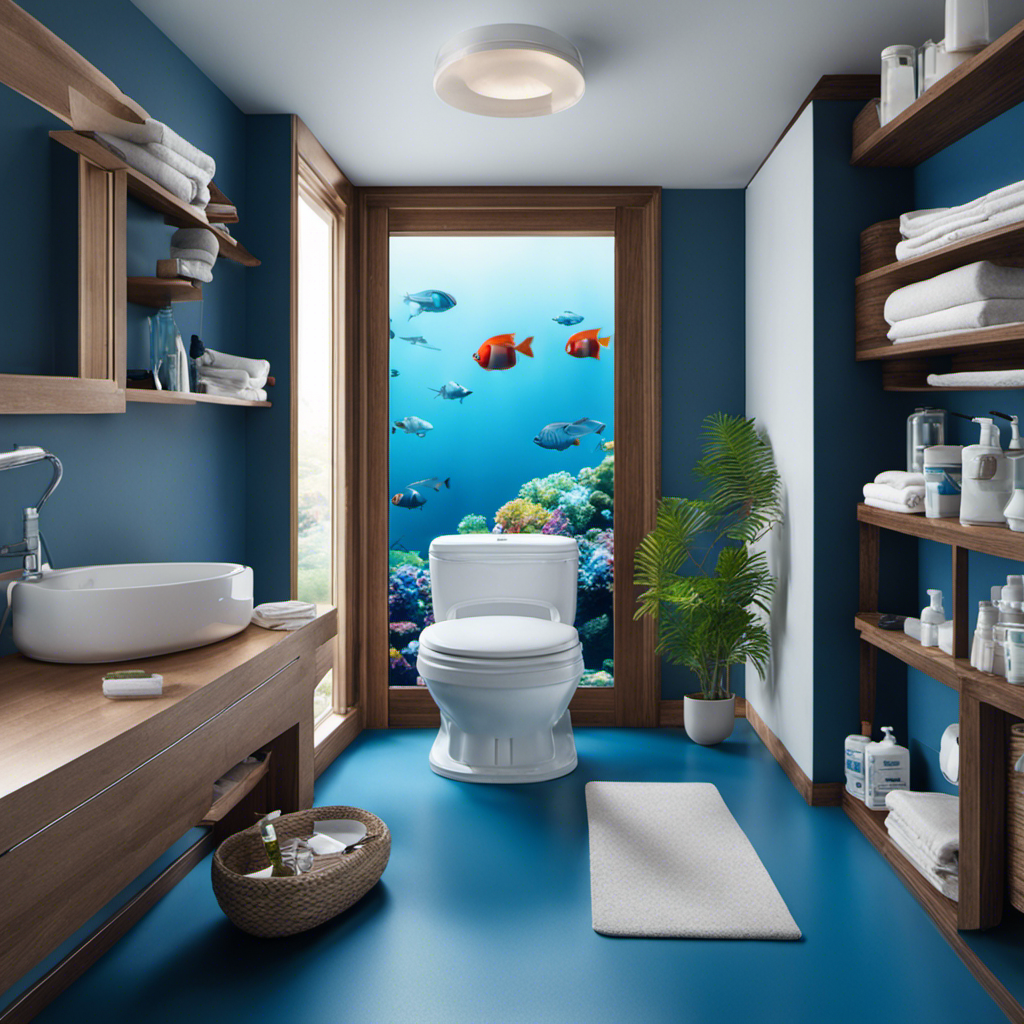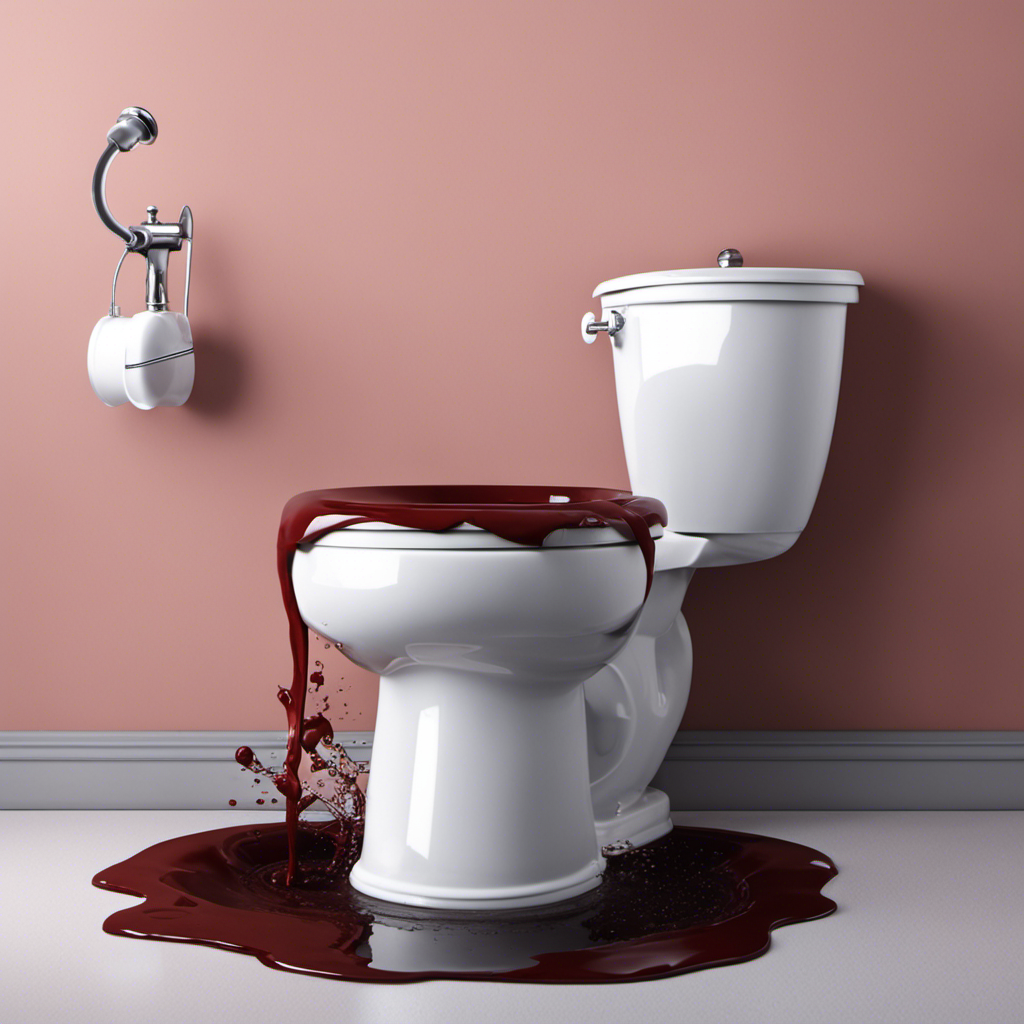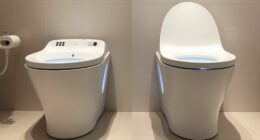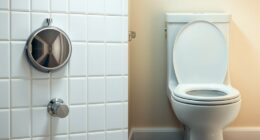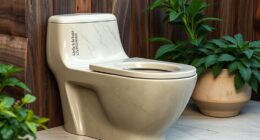Coincidentally, have you ever wondered how much water your toilet uses? Well, let me enlighten you on this fascinating topic.
In this article, we will delve into the history of toilet water usage, explore the factors that affect water consumption, and discuss the standard water usage of traditional toilets.
Additionally, we will uncover the innovative designs that have revolutionized toilet water-saving, and provide you with practical tips to reduce your toilet’s water usage.
Get ready to flush away your ignorance and embrace a more sustainable approach to toilet water consumption!
Key Takeaways
- Ancient civilizations had inefficient toilets that wasted a lot of water.
- Advancements in plumbing technology led to more efficient toilet systems.
- Dual-flush toilets were introduced to allow users to choose between full and half flushes.
- Reducing water usage in toilets can have a significant environmental impact.
The History of Toilet Water Usage
The history of toilet water usage can be traced back to ancient civilizations. In those times, toilet water efficiency was not a concern, and water conservation efforts were virtually non-existent.
The early toilets, such as those in ancient Rome, relied on a constant flow of water to flush waste away. This resulted in significant water wastage.
As time progressed, advancements in plumbing technology led to the development of more efficient toilet systems. Dual-flush toilets, for example, were introduced to allow users to choose between a full flush or a half flush, depending on the waste being disposed of. These innovations marked the beginning of a shift towards greater toilet water efficiency and a heightened awareness of water conservation.
Moving forward, it is important to consider the factors affecting toilet water consumption in order to further improve efficiency and promote responsible water usage.
Factors Affecting Toilet Water Consumption
Factors such as type, age, and efficiency affect how much water a toilet consumes. The type of toilet, whether it is a gravity-flush, pressure-assisted, or dual-flush, can greatly impact water usage. Older toilets tend to use more water per flush compared to newer models, as they were designed before water conservation regulations were put in place. Additionally, the efficiency of the toilet’s flushing mechanism plays a significant role in water consumption. A more efficient toilet will use less water without sacrificing flushing power. It is important to consider these factors when choosing a toilet, as excessive water usage can have negative environmental implications. By selecting a toilet with high efficiency and considering the environmental impact of excessive water usage, we can contribute to water conservation efforts.
| Factors Influencing Toilet Efficiency | Type | Age | Efficiency |
|---|---|---|---|
| Gravity Flush | New | Old | High |
| Pressure Assisted | Old | New | Medium |
| Dual Flush | New | New | Low |
Standard Water Usage of Traditional Toilets
When considering traditional toilets, it’s important to be aware of the standard water usage. Toilet water conservation is crucial for reducing our environmental impact.
Traditional toilets typically use around 1.6 gallons of water per flush. This may not seem like much, but when you consider that the average person flushes the toilet around five times a day, the water usage adds up quickly. In a household with four people, that’s over 30 gallons of water wasted every day just from flushing the toilet.
Multiply that by the number of households in a city, and you can see the significant environmental impact. It’s important to explore alternatives like low-flow toilets and dual-flush systems to conserve water and reduce our footprint.
Water-Saving Innovations in Toilet Design
If you’re looking to conserve water and reduce your environmental impact, exploring water-saving innovations in toilet design is essential.
Toilet efficiency has come a long way in recent years, with manufacturers introducing eco-friendly toilets that use significantly less water without compromising performance. These innovative designs incorporate advanced flushing mechanisms and improved bowl shapes to maximize flushing power while minimizing water usage.
Some toilets even offer dual-flush options, allowing users to choose between a partial flush for liquid waste and a full flush for solid waste. Additionally, the use of low-flow technology ensures that water is distributed evenly throughout the bowl, further enhancing efficiency.
By investing in these water-saving toilets, you can make a significant contribution to conserving water and reducing your ecological footprint.
Now, let’s move on to the next section where I will provide you with some tips for reducing toilet water usage.
Tips for Reducing Toilet Water Usage
One simple way to conserve water in the bathroom is by installing a dual-flush toilet, which allows users to choose between a partial or full flush. This efficient flushing technique is a great conservation strategy for reducing water usage.
When you have liquid waste, you can opt for the partial flush, which uses less water. For solid waste, the full flush provides the necessary power to ensure proper waste removal. By giving users the option to adjust the flush according to their needs, dual-flush toilets can help save significant amounts of water.
It’s estimated that dual-flush toilets can reduce water consumption by up to 67% compared to traditional toilets. This makes them an excellent choice for anyone looking to conserve water and lower their water bills.
Frequently Asked Questions
How Often Should a Toilet Be Flushed to Conserve Water?
To conserve water, I flush the toilet only when necessary. By reducing toilet flushing frequency, I save gallons of water each day. Simple tips like using a half flush or installing a dual-flush system also help to reduce water usage.
Are There Any Government Regulations or Incentives for Installing Water-Saving Toilets?
Are there government regulations or incentives for installing water-saving toilets? The government has implemented regulations to promote water conservation, such as requiring water-saving toilets in new buildings. Additionally, there may be cost benefits and rebates available for installing these toilets.
Can I Retrofit My Existing Toilet to Make It More Water-Efficient?
Yes, you can retrofit your existing toilet to make it more water-efficient. There are several retrofitting options available, such as installing a dual flush mechanism or a toilet tank bank. Cost considerations vary depending on the chosen option.
Are Bidets More Water-Efficient Than Traditional Toilets?
Bidet benefits include superior cleanliness and reduced toilet paper usage. When considering the environmental impact, bidets are more water-efficient than traditional toilets. They use a fraction of the water, making them a sustainable choice.
How Can I Calculate the Water Usage of My Toilet to Monitor Its Efficiency?
To calculate toilet efficiency and monitor water usage, I can measure the amount of water used per flush by timing how long it takes to fill the tank. I can then compare this to the manufacturer’s specifications.
Conclusion
In conclusion, the history of toilet water usage is a fascinating journey. The standard water usage of traditional toilets is quite high. However, with the introduction of water-saving innovations in toilet design, we now have the opportunity to significantly reduce toilet water consumption.
By implementing simple tips and tricks, such as fixing leaks and using dual-flush systems, we can make a significant impact on our water usage. It is through these innovations and efforts that we can ensure a sustainable future for our planet.
